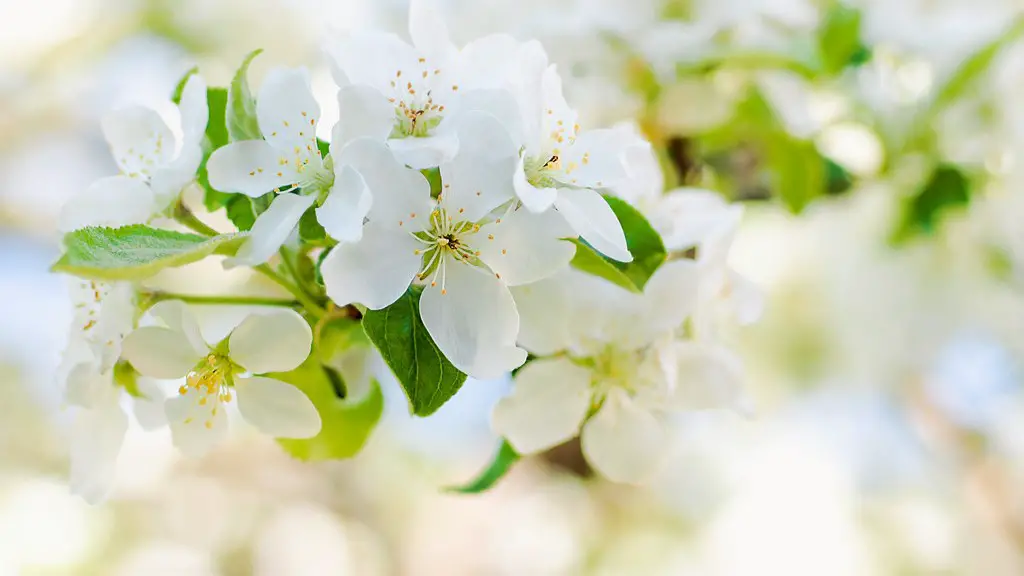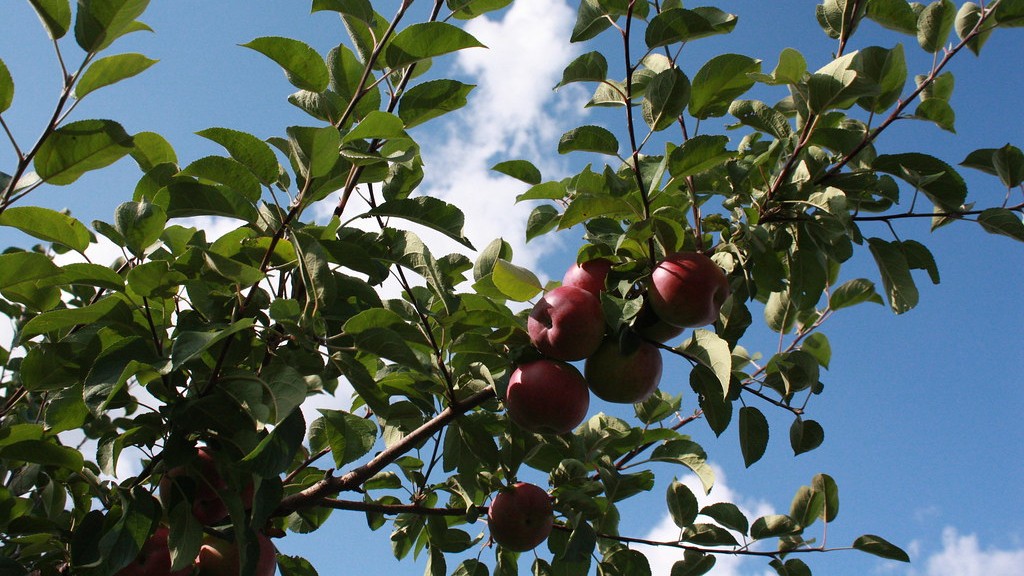Caring for a potted lemon tree is a rewarding and enjoyable experience that can bring freshness and beauty to any room. As with many citrus varieties, lemon trees can be a bit finicky when it comes to care, but this doesn’t mean it’s impossible. With a little knowledge, you can enjoy the beautiful, fragrant lemons for many years to come. Here’s how to take care of a potted lemon tree.
First, you’ll need to find a pot suitable for your lemon tree. When selecting the pot, make sure it’s wider than it is tall, as lemon trees need plenty of root space to thrive. The pot should also have one or two drainage holes at the bottom and sides, to allow excess water to escape. After you’ve found your pot, you’ll need to choose a quality soil mix and fertilize your lemon tree.
When it comes to picking out a soil mix, you’ll want to pick something that is well aerated and drains quickly. A rich soil will help give your lemon tree the nutrients it needs and will help it to retain moisture. When it comes to fertilizing, you’ll want to use a fertilizer specifically designed for citrus trees. Remember to follow the instructions and apply the fertilizer every month or so.
Your potted lemon tree will also need a lot of light to stay healthy. You’ll want to place it in a sunny spot with at least 6-8 hours of direct sunlight each day. If you’re worried about it getting too hot, you can place curtains around the pot to shield it from the sun’s rays. In addition to light, you’ll need to water your lemon tree regularly.
For best results, you’ll want to water your lemon tree every day. If you don’t have access to a garden hose, you can just use a bucket or pan. Fill the container with lukewarm water and give the pot a thorough soaking. Make sure to let all the excess water drain away. During the winter months, you’ll want to water less, as the tree will need less moisture in cooler temperatures.
Finally, it’s important to keep an eye on your lemon tree for signs of pests and diseases. If you notice any discoloration or signs of damage on the leaves, it’s a good idea to prune off affected branches with sharp gardening shears. This will help to keep your tree healthy and will prevent the spread of disease.
With a little bit of TLC, you can enjoy the bright, fragrant scent of your very own potted lemon tree and have an bounty of sweet lemons to pick.
How to Prune a Potted Lemon Tree
A regular pruning routine is an essential part of taking care of a potted lemon tree. Pruning helps to encourage growth, foster healthy branches and leaves, and ensure the tree maintains a pleasing shape. Here’s how to go about pruning your potted lemon tree.
First, you’ll want to assess the condition of your tree. Look for any branches that are dead, dying, diseased, or weak. If you notice any, you should prune them off at the base. This will help prevent the spread of any diseases and will help keep the tree healthy and strong.
Next, you’ll want to prune any branches that are too long or at awkward angles. Carefully trim them so they are in line with the scaffold branches of the tree. This will help to create a pleasing shape and will also help to encourage new growth.
If you want your lemon tree to produce more fruit, you’ll want to make sure you’re pruning off any blooms that are present. This will help reduce competition for nutrients and make sure the remaining blooms get the best chance at producing fruit. Make sure to use sharp and clean gardening shears to ensure a neat and clean pruning job.
When you’re done, you’ll want to give your lemon tree a good drink of water. This will help the tree to recover from pruning and will help to promote new growth. You should also keep an eye out for any pests or diseases that may have been present before pruning.
By following these steps, you can enjoy the beauty of a professionally pruned lemon tree and look forward to a bounty of delicious lemons.
Tips for Fertilizing a Potted Lemon Tree
Fertilizing is an important part of keeping a potted lemon tree healthy and productive. When selecting a fertilizer, you’ll want to make sure you pick one that’s specifically designed for citrus trees. Here are some tips for fertilizing your potted lemon tree.
First, you’ll want to make sure you purchase a quality fertilizer. Look for one with a high nitrogen content, as this will provide the tree with the nutrients it needs. You should also look for one with a low phosphorus content, as too much phosphorus can inhibit the absorption of other important nutrients.
Once you’ve selected your fertilizer, you’ll want to give your lemon tree a thorough soaking with water. This will help the fertilizer to penetrate the soil and reach the roots. After the tree has been soaked, you can apply the fertilizer. Make sure to follow the instructions on the package and only apply the amount specified.
When it comes to timing, you’ll want to apply the fertilizer once a month or so. The best time to do this is in the spring, before the tree begins to blossom. This will give it the nutrients it needs to produce a bountiful harvest. You can also apply fertilizer during the summer to encourage growth and promote healthy leaves and branches.
Finally, you should consider adding some organic matter to the soil. This could be compost, manure, organic mulch, or something else. This will help to increase the soil’s nutrient content and will also help to retain moisture.
By following these tips, you can ensure your lemon tree has the nutrients it needs to thrive and you can look forward to harvesting juicy, sweet lemons.
How to Diagnose Common Potted Lemon Tree Diseases
There are a few common ailments that can affect potted lemon trees, so it’s important to know how to diagnose and treat these diseases. Here are some common diseases that you should be on the lookout for and how to treat them.
The first disease to watch out for is root rot. This is caused by overwatering and poor drainage. To diagnose it, check the roots and feel for soft spots. If you notice any, you’ll need to give your lemon tree a good soaking and then let it dry out for a few days. After this, you should transplant the tree into a pot with better drainage.
Another common disease is citrus canker. This is caused by the Xanthomonas bacterium and can cause discoloration or spotting on the leaves. To diagnose it, you’ll need to take a closer look at the plant. If you notice any discoloration, you’ll want to prune off any affected branches with sharp, clean shears. You should also apply an appropriate fungicide to prevent the spread of the disease.
Citrus blight is another disease to be aware of, as it can cause branches to die off. Symptoms include discoloration, spotted leaves, and bark shedding. To diagnose it, look for any discolored or dead branches. If you notice any affected areas, you should prune off the branches and apply an appropriate fungicide for best results.
Finally, citrus scale can be a problem, as it can cause yellowing or discoloration of the leaves. To diagnose it, you’ll need to look closely at the stems and leaves. If you see any white spots, this is a sign of scale. To get rid of it, you can prune off any affected branches and apply a neem oil solution or an insecticidal soap.
By being aware of these common diseases, you can ensure your potted lemon tree stays healthy and produces a bountiful harvest.
How to Harvest Potted Lemon Tree Lemons
Harvesting the sweet and juicy lemons from your potted lemon tree is one of the most rewarding experiences. Here’s how to do it.
First, you’ll want to make sure the lemons are ripe. Unripe lemons won’t have the same flavor and will not store for as long once picked. To tell if a lemon is ripe, gently squeeze it. If it yields to the pressure, it’s ready to be harvested. If not, wait a few days and check again.
Once the lemons are ripe, you’ll want to use clean and sharp gardening cutters to snip the stems. This will ensure the fruit won’t be damaged when it’s peeled. If you want, you can also leave the stems attached, as this will help to keep the lemons fresh once they’re picked.
When harvesting, you can pick the lemons one at a time or you can pick the entire branch at once. Before cutting, however, make sure to check the branch for any pests or diseases. If you see any, you should prune off the affected branches to ensure your tree stays healthy.
After harvesting, you can store the lemons in a cool dry place for up to two weeks. If you want to keep them for longer, you can preserve them by freezing, pickling, or juicing them. These methods will help to extend the shelf life of your lemons and you’ll be able to enjoy them for many weeks.
By following these steps, you can harvest a bounty of sweet, juicy lemons from your potted lemon tree and enjoy the fruits of your labor.
How to Store Potted Lemon Tree Lemons
Storing your fresh lemons is an important part of making sure they stay fresh and flavorful. Here are some tips on how to store your lemons from a potted tree.
First, you’ll want to make sure you store your lemons in a cool, dark, and dry place. The ideal temperature is between 45-50°F (7-10°C) and the humidity should be between 60-75%. If you can’t keep the lemons in a cool place, you can store them in the refrigerator to extend their shelf life.
When it comes to containers, you’ll want to find something that is breathable, so air can circulate and keep the lemons from getting too warm. A paper bag or cardboard box is ideal, as it will allow air to flow and will help to keep the lemons cool. You should also make sure to keep the lemons away from light and heat sources, as this will hasten the ripening process.
Once your lemons are properly stored, you’ll want to make sure you use them up as soon as possible. If you’re not ready to use them yet, you can freeze them for up to 6-12 months. Just make sure to wrap them up in plastic or foil to prevent freezer burn.
In addition to freezing, you can also preserve your lemons by pickling or juicing them. This will help to maintain the lemons’ peak flavor and will extend their shelf life.
By following these tips, you can make sure your lemons stay fresh and flavorful for as long as possible.


